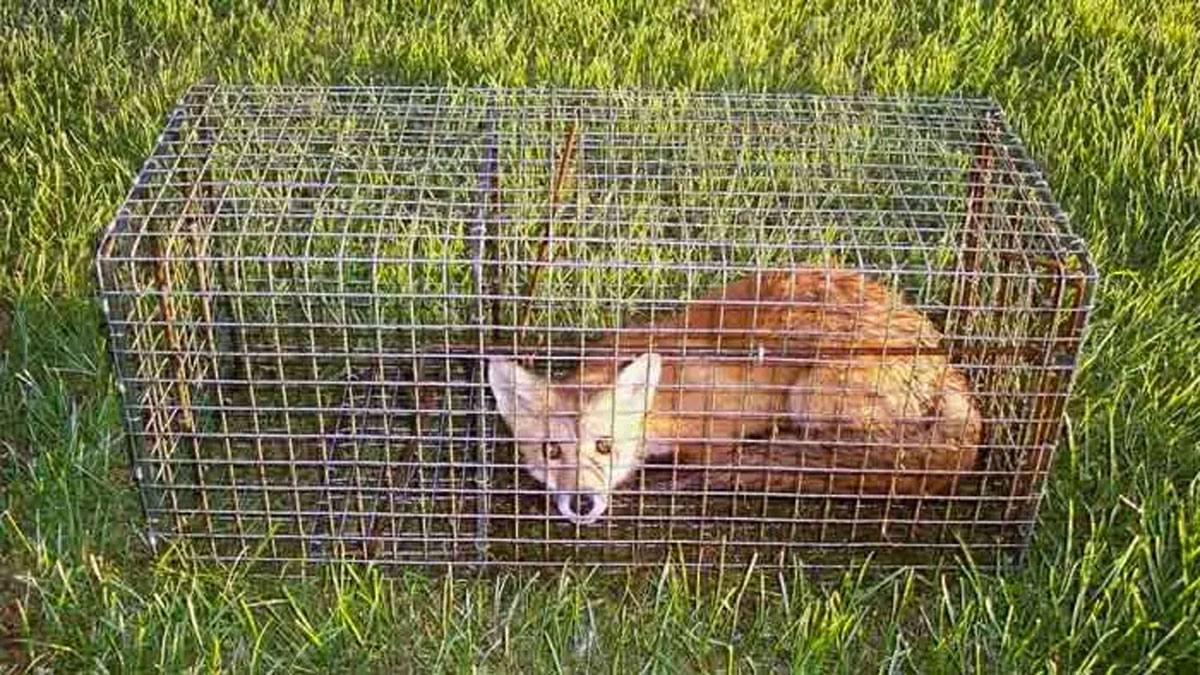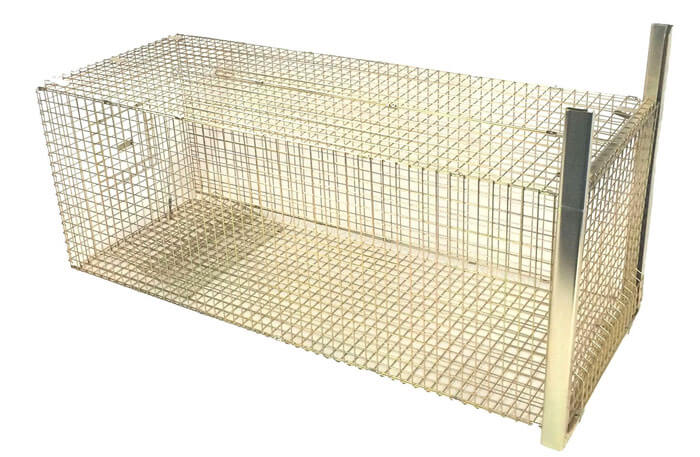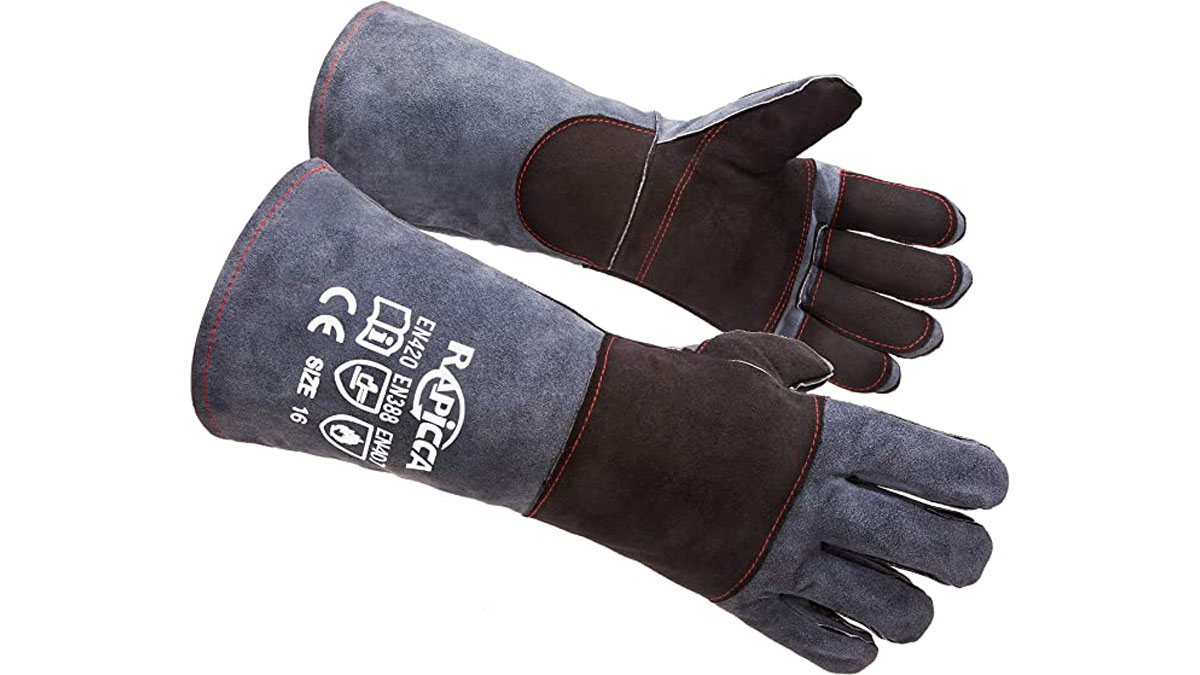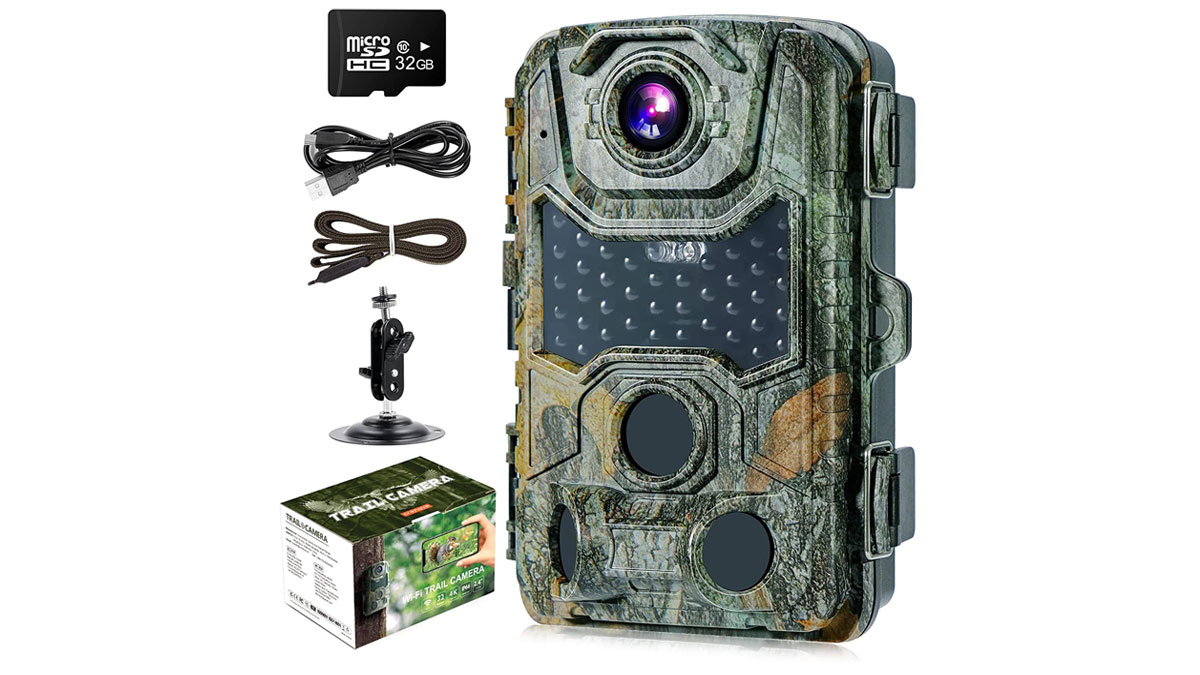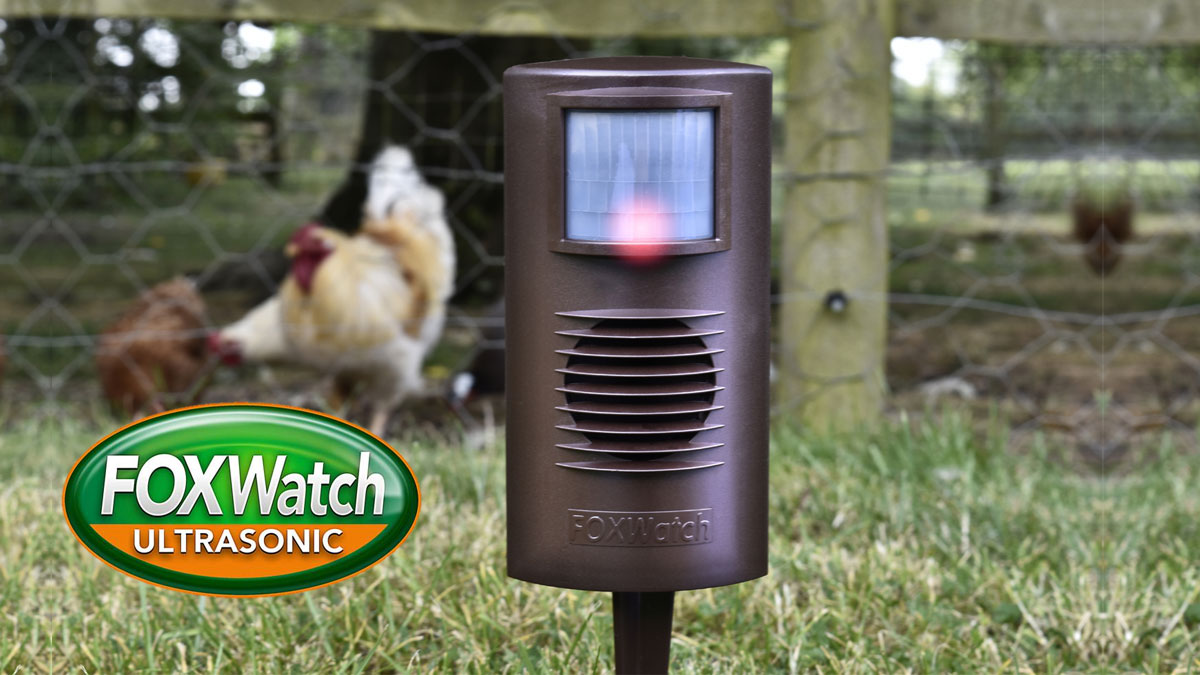How to trap a fox in a cage humanely
There are several reasons why you, as a professional pest controller or animal handler, might need to trap a fox, including sickness, injury, relocation or removal.
However, it’s definitely not a decision to be taken lightly and shouldn’t be done without extensive research and preparation first, as there are a number of important things to consider.
In this article, we’ll look at the laws protecting foxes, making a plan for what to do with the fox, the best type of trap to buy, additional tools you might need, how to set and bait the trap, and what deterrent to use if you need to keep foxes away in the future.
1. Know the law regarding foxes
Foxes are protected by a number of Acts of Parliament, so it’s worth making sure that you are acting within the law before starting the process of trapping a fox.
The Animal Welfare Act 2006 contains the important Section 4 – Unnecessary Suffering, which states:
(2) A person commits an offence if—
(a) he is responsible for an animal,
(b) an act, or failure to act, of another person causes the animal to suffer,
(c) he permitted that to happen or failed to take such steps (whether by way of supervising the other person or otherwise) as were reasonable in all the circumstances to prevent that happening, and
(d) the suffering is unnecessary.
The Animal Welfare Act 2006
You must check the cage trap at least once a day. Not only because it’s your legal and moral obligation, but also because it’s not always foxes that get trapped. Domestic cats commonly make their way into cage traps and will need to be released quickly before their owners get worried.
Once a fox is trapped in your cage, you are responsible for the welfare of that animal. That means the fox must be dealt with quickly and must not be subjected to extreme weather or denied access to food and water.
You should also familiarise yourself with the Wild Mammals (Protection) Act 1996, specifically Sections 1 & 2, as these lay out what is classed as an offence, and what is an exception from offence in the name of legal pest control.
You’ll be wanting to stay on the right side of this definition of an offence:
1. Offences.
If, save as permitted by this Act, any person mutilates, kicks, beats, nails or otherwise impales, stabs, burns, stones, crushes, drowns, drags or asphyxiates any wild mammal with intent to inflict unnecessary suffering he shall be guilty of an offence.
2. Exceptions from offence under the Act.
A person shall not be guilty of an offence under this Act by reason of—
(a) the attempted killing of any such wild mammal as an act of mercy if he shows that the mammal had been so seriously disabled otherwise than by his unlawful act that there was no reasonable chance of its recovering;
(b) the killing in a reasonably swift and humane manner of any such wild mammal if he shows that the wild mammal had been injured or taken in the course of either lawful shooting, hunting, coursing or [F1 lawful] pest control activity;
Wild Mammals (Protection) Act 1996
2. Make a plan ahead of time
Leg traps and most types of snares are illegal, so a live cage trap is a popular and humane way of catching a fox, without causing injury or unnecessary suffering.
However, setting up a cage trap is all very well, but it’s absolutely imperative you have a definite plan for what happens once you’ve caught the fox.
It’s not fair or legal to keep a wild animal in a cage for an extended period of time, so always know the fate of the fox before you’ve actually caught it.
Sick or injured foxes
If you’re using a trap to catch a sick or injured fox, then call the RSPCA or a fox/wildlife rescue centre ahead of time so you know exactly where to take the fox when the time comes.
They are likely to have some useful additional advice and may even offer their own trapping service.
The following organisations can assist you with helping sick or injured foxes, or at least tell you who to contact in your area:
Relocating foxes
If you’re catching a fox with the intention of relocating and releasing it elsewhere, please do so with the utmost caution.
Contrary to popular belief, an urban fox caught in a city centre will not survive long if released in the alien environment of the countryside. The unpleasant, but commonly-held, view that foxes should be ‘sent back to the country where they belong’ is misinformed, to say the least.
The Abandonment of Animals Act (1960) made it a criminal offence to abandon an animal “in circumstances likely to cause the animal any unnecessary suffering” and this law was tightened up even more under the Animal Welfare Act 2006. So if you were planning to catch the fox, drive 50 miles away and release it, you’ll need to think again.
You should release the fox in a similar environment to where it was caught, otherwise your actions could be considered ‘cruel and unnecessary’ and liable for prosecution, so consider that carefully before catching a fox with the intention of releasing it somewhere else.
Putting down foxes
If you’ve exhausted all other options and the only choice is to have the captured fox put down, please ensure that it’s done by a professional pest controller, who is fully licensed and insured to use firearms, or someone with a veterinary qualification.
This option should really only be considered as a last resort, as it’s very sad to euthanise a healthy animal, even if it is done within the law. Once the animal has been put to sleep, there is the further issue of the carcass needing to be disposed of ethically, so this is something that needs the utmost level of care and attention.
If you are set on going down this route, let the experienced professionals take care of the whole process for you without the need for you to trap the fox yourself.
The British Pest Control Association (BPCA) can assist you with finding a professionally licensed pest controller.
3. Buying a fox cage trap – what to look for
So, if you’ve taken into all the above into consideration and want to proceed with getting the best fox cage trap [aff], then let’s look at how to go about it.
The most common fox cage traps operate using a sprung door / step-plate mechanism, which basically works like this:
- Bait is placed at the far end of the cage to entice the fox with the sprung door set open.
- The fox enters through the open sprung door to retrieve the bait and steps on a metal step-plate which is on the floor of the cage.
- The fox’s weight on the step-plate causes the open door to spring shut behind the fox, trapping it in the cage.
Whilst this is the basis for most common cage traps, there are some extra things to consider that will make the task of catching and dealing with a fox much easier.
a) A big enough size
“Male foxes have an average head and body length of 67cm (26″), plus a tail of about 41cm (16″). Total length: 108cm (42″).“
Professor Stephen Harris, ‘Urban Foxes’, 2001
It is, of course, very important to know the size of the animal you are trying to catch so that you can buy a cage of the appropriate dimensions.
However, when looking for a suitable trap, you need to keep in mind that just because a fox will technically fit into a particular cage, that doesn’t mean it will necessarily go into it of its own accord.
It’s easy to make the comparison with a cat being put into a cat basket to be taken to the vet or a cattery. The basket is a bit larger than the cat and it makes for a nice, hand-held method of transportation. All very logical.
But, this is not the way it works with a wild fox.
Foxes are naturally wary animals and they will not risk venturing into a small and constricted space in case they get stuck and can’t get back out. There are many different sizes of cage traps available, but the cage will need to be at the larger end of the scale in order to entice the fox.
Don’t waste your time buying a cage trap that a fox won’t be interested in entering. The cage must large enough for a fox to feel comfortable walking into without arousing its suspicions.
For this reason, your cage trap should measure at least 90cm(L) x 45cm(H) x 45cm(W) to be effective. (35″ x 18″ x 18″)
b) A quick-release sliding door
The normal procedure to tempt the fox is to place bait (chicken, dog food etc) at one end of the cage. The fox will come in, step on the tread plate and the door will shut behind it.
How the door actually closes behind the fox, once it has been tempted into the cage, is an important feature to think about.
Some cage traps have an inconvenient spring-loaded door that lies flat on the bottom of the cage then springs up to shut behind the fox. These can be quite fiddly to set and can be quite aggressive if you accidentally trigger them.
Much easier to set are the sliding, guillotine-style doors that you slide up to set and then it slides down behind the fox when it steps on the tread plate.
These sliding doors also make it much easier to release the fox as you can open the door and leave it to come out of its own accord. A scared fox will cower at the back of a cage, so you could risk being bitten if trying to reach in to get it out. Leaving the door open and waiting for the fox to come out naturally removes the stress for you and the fox.
If another animal has inadvertently been trapped, a sliding door makes it simple to release them quickly too.
c) A separate bait door
Many cage traps have the tread plate at one end of the cage. This helps to ensure that the animal is well and truly inside before the door shuts, avoiding any accidental injuries.
The most convenient traps will have a little bait door at the same end as the tread plate – the opposite end from the sliding door.
Not only does it allow you to place the bait easily without having to reach the full length of the cage, but it also means you can change or replace the bait without touching or resetting the sliding door.
There may be occasions when the bait is simply not attractive enough, or it gets eaten by smaller animals that are not heavy enough to trigger the trap. Having a bait door makes putting in a new food source much easier.
d) A carry handle
A cage that’s large enough to capture a wild fox is going to be quite heavy and cumbersome.
It’s also likely you are going to need to move the cage once you have caught the fox, either to a more convenient place or into the back of a car, if it’s being transported.
While not absolutely essential, this task is much easier if there’s a carry handle on top of the cage.
It’s a small, but important detail that will make your life easier when it comes to moving the trap, so definitely worthy of consideration.
e) A flat-packable cage
Foxes are active throughout the year, but the months between June – October are particularly busy. Humans come into contact with foxes most often during these months.
The days are longer so we notice them more, plus cubs are starting to develop into adults, honing their skills and branching out to find their own territories.
Cages are very useful to have during these months, but what about the rest of the year when they might not be needed? Where will you store it when it’s not in use?
A solid-state cage can be a bit awkward to store, especially if space is tight. Having a cage that can be taken apart is certainly not an easy 5-minute job, so ideally it should remain constructed. But, knowing it can be taken apart and flat-packed, at least gives you the option to store it out of the way.
Just keep the assembly instructions to hand for when it needs to be put together again.
4. The best fox cage trap
There are plenty of animal trap cages available, but not too many that are large enough to successfully fool a fox into entering.
The fox cage trap industry also seems beset with supply chain issues and discontinued products, often resulting in a lack of stock and availability.
These issues mean that actually getting hold of fox cage traps that tick all boxes and are actually adequate for the job is slightly more difficult than one might imagine.
So, which fox cage trap is best, and, most importantly, will it do the job of successfully trapping a fox?
The TrapMan – Extra large fox cage trap
The TrapMan is a family-run business based near Preston and has been specialising in manufacturing live animal cage traps in the UK for over 20 years.
They supply many professional pest controllers and specifically make the promise “to deliver every customer a first-class product that will do the job it was designed to do.”
Among the many traps they manufacture is the Extra Large Fox Cage Trap [aff], a heavy-duty, durable cage that contains all the features you would want in an effective fox trap:
- Large size: 122cm/49in (L) x 48cm/19in (H) x 46cm/18in (W)
- Sliding, guillotine door
- Tread plate and pull-bait trigger
- Bait door
- Arrives flat-packed
- Post-purchase support
- Made in the UK
The company provides full assembly and baiting instructions, and will also provide you with after-purchase email advice and support for as long as you need it.
As all the cage traps are manufactured in Preston (rather than imported), The Trapman also stocks spare parts for the trap, which is reassuring to know in the event anything needs replacing during the course of its life.
If you are looking for a top-quality fox cage trap that can be used repeatedly, then buying from a specialist animal trap manufacturer that’s based in the UK would be a sensible choice.
5. Other useful fox-trapping tools
Getting the correct cage trap is a very important part of the fox-trapping process, but it’s not the only thing to think about.
Once you are out in the field and putting your trap to use, there may be a few other things that will make your life a bit easier.
Protective animal handling gloves
If you’re going to be responsible for removing a terrified fox from a cage trap, then it makes sense to wear some heavy-duty gloves that are designed for handling animals.
Fingers, hands and forearms are all likely targets for a frightened fox (or cat), so you wouldn’t want to reach into the cage without some long-sleeved, bite-proof protection.
The fox could have health issues and may well have urinated or defecated in the cage, so a solid pair of gloves will protect you from any germs.
Germ transfer works both ways too, so gloves will also stop you from passing on any potentially harmful human bacteria to the fox.
A garden trolley
A cage trap big enough for foxes is going to be about 1.2m long and made of galvanised steel. It’s therefore going to be quite heavy and awkward to lift.
You need to think about how you’re going to move the cage around when you’re installing it, retrieving it and placing it in storage, particularly if there isn’t a second person to help out.
For example, the place where you intend to set up the trap might be a long distance from the boot of your car. It will be even heavier on the way back once the trap contains a stressed-out fox.
Having a trolley with collapsible sides, steerable wheels and chunky, all-terrain tyres will enable you to move the cage much more easily and keep the cage horizontal, which is very important when it contains a fox.
These types of trolleys have become very popular and are regularly spotted at music festivals, garden shows and auto-jumbles due to their convenience and ability to be dragged over rough terrain. Consider adding one to your fox-trapping arsenal and your lower back will probably thank you.
A wildlife camera
Also known as trail cameras, garden cameras or camera traps, these are motion-activated, outdoor cameras that can film little segments of footage when an animal walks in front of the sensor. They’re popular for use in back gardens and nature reserves, and you’ll have likely seen them on BBC Springwatch or Countryfile.
In terms of fox trapping, a wildlife camera can be very useful to establish where to actually position the cage trap, if it’s not immediately obvious where the fox is active. Setting up a camera in different places ahead of time will show you if one area is likely to be more successful than another.
Once the cage is positioned, a camera will also show you what’s going on when you’re away from the trap, especially if you install it facing the entrance.
For example, you might wonder why nothing has happened for days or why the bait has disappeared without triggering the trap. A camera might reveal what animal is eating the bait or show that a fox is approaching the entrance but won’t go in. Being able to actually see this activity will let you know if you could be doing anything better.
Wildlife cameras with WiFi and Bluetooth capability are the most convenient, because you can stand next to the camera and view the footage on your phone without removing the SD card and putting it into a laptop.
Please note, these cameras aren’t like Ring doorbells where you can monitor what’s going on from a distance. You still need to visit the site every day to check the trap and download the footage to your mobile device.
A large blanket
Once a fox has been trapped in your cage, it will probably be stressed due to being caught in a confined space. This will only be compounded by the sight and smell of a human nearby.
A way to calm the fox is to put a large blanket over the cage to create a more darkened space and to reduce visual stimulation.
Covering the cage is a common technique to relax animals, particularly if transporting them. If you are taking an injured or unwell fox to an animal hospital, or anywhere that involves travelling, putting a blanket over the top is a humane thing to do. Just remember to leave one end of the cage uncovered to allow air to flow through.
As vets and animal hospitals always welcome towels and blankets, having a blanket you can leave with the fox will help keep it comfortable during its period of recovery.
6. How to set & bait a fox trap cage
a) Location – Where to put the trap
A cage trap should not be placed randomly or haphazardly with a simple hope that a fox will find its way into it.
Rather, it should be methodically positioned at a place where there is clear evidence of fox activity. As mentioned above, a wildlife camera [aff] will help you to locate an active fox.
Footprints, fouling, a strong smell of urine, holes or turned-over earth are definite signs that a fox is active in that area and is where a cage trap should be placed.
Foxes like to navigate areas by the easiest route, so consider the following spots when deciding exactly where to put it, and apply to your own situation:
- At a hole in a fence or under a wall
- At a break in shrubbery or undergrowth
- On a track, pathway or any other easily-to-navigate route
- Pressed up alongside a chicken pen
- Somewhere sheltered and shady
A fox will have a set route when it does the rounds of it’s territory, so the closer you can place the trap to these routes, the more successful you are likely to be at catching the fox.
b) Preparing – How to get the trap in place
Foxes are very clever animals and there’s a reason why they’re able to survive in such diverse environments as The Sahara Desert, The Arctic and our towns and cities.
They are naturally suspicious and very wary of anything new or out of the ordinary, so keep this in mind when setting your trap.
Position but wait to bait
While it’s tempting to set and bait your trap on the day you get it, you’re better off being patient and simply putting the trap in the location you want to use it, without baiting it and leaving it there for a couple of days.
The reason is because, from a fox’s point of view, a new object suddenly appearing in it’s territory, smelling strongly of human will be treated with absolute suspicion and the fox won’t immediately go near it.
Allowing a couple of days to pass will give the fox time to get used to the cage and for your (human) smell to dissipate slightly, lulling it into a false sense of security.
Secure your trap
At the time you put the cage trap in your chosen location, you can do a little preparation so that it’s fully set up and ready for when you do bait it.
Make sure the ground you put it on is flat, so that the bottom of cage is flush against the earth and not wobbling around.
Larger foxes can thrash around quite violently, so for extra security, you could secure the cage into the ground with heavy duty tent pegs, or something similar.
Most importantly, cover the bottom of the cage with soil, so that the mesh at the bottom is completely covered. A fox is very unlikely to walk on metal mesh, so the soil covering will give the impression of normal ground underfoot.
Do test the trap afterwards to make sure that the soil is not impeding the mechanism.
Pre-bait the trap
Pre-baiting (or free-feeding) is the placing of bait outside, but not inside, the trap in order to set a pattern of feeding before fully setting it.
Again, it’s worth being patient and pre-baiting the trap over 2 or 3 consecutive nights (foxes are most active at night). Maybe two metres away from the entrance on Night 1, one metre away on Night 2 and right outside on Night 3.
Dotting dried meat dog treats [aff] around the area is effective as it keeps the fox near the trap, hunting around for strong-smelling titbits and being rewarded.
This helps the fox to associate the area with food and to make it feel comfortable around the trap, which is vital in actually getting it to enter.
c) Setting – how to bait the trap
On the day you actually fully set and bait the trap, put a small amount of bait just outside at the entrance to the cage.
Set the sprung door in accordance with your cage’s instructions and place bait right at the back of the cage beyond the step plate, either through the baiting or release door, or via reaching in through the sprung door.
Some cages have a hook to place the bait on, but if yours doesn’t, try and attach the bait up off the floor either hanging from the top panel, on the rear panel, or as far back as you can on the side panels.
The aim is to get the fox working hard to retrieve the bait once it’s inside the cage, increasing the chances it treads on the step plate and gets trapped successfully.
What bait to use
Foxes are not fussy eaters and have an excellent sense of smell so you do not need to bait the trap with anything too extravagant.
Cat and dog food is popular because it is strong-smelling and cheap to purchase. It’s useful for pre-baiting the trap and for putting on the floor of the cage beyond the step plate. However, the soft nature of the wet food means you can hang it up off the floor to make the fox really work for it.
Raw or cooked chicken is a fox favourite and good for attaching up on the back panel inside the cage or hanging from the top using a hook or cable tie.
If using wet/fresh food, then consider replacing it every few days if there’s been no fox activity. Foxes will be more tempted by fresh food, rather than something rancid, covered in flies or ants.
Alternatively, continue using the dried meat dog treats. These are a good all-rounder, as they have a strong scent, won’t go off quickly and can be placed on the ground or hung up.
Check the trap every day and be humane
Once you’ve set the trap, ensure make sure you check it at least every morning, if not later in the afternoon too. It’s your legal and moral duty to check the trap every day.
It’s cruel to leave a fox any longer in a cage than is necessary and, as discussed earlier in this article, you should already have a plan for what will happen next.
Regular checking also means you can quickly release any other animals that have accidentally been caught, especially cats.
If moving the fox, it’s a good idea to cover the cage in a large blanket to help calm it down and not cause it additional stress.
You may also wish to use some sort of protective gloves, not only to prevent yourself from being bitten, but also to make a heavy steel cage easier to lift.
7. Deterring foxes post-removal
If you’ve trapped and removed a fox because it was causing a nuisance, it’s recommended that you use a deterrent to put off neighbouring foxes from moving into the vacant territory.
Any foxes living close by will quickly realise that the area is no longer occupied. The removed fox will no longer be scent-marking the territory and this will signal to local foxes that this is an opportunity to take over.
If you don’t do anything, your hard work of trapping and removing the previous fox will quickly be undermined.
Therefore, using a fox deterrent that forces foxes to associate your garden (or area you wish to protect) with something negative, will help to keep any nuisance behaviour down to an absolute minimum.
The FOXWatch Ultrasonic Fox Deterrent
The FOXWatch is a small device that lets out high-pitched bursts of noise every time a fox walks in front of its motion sensor.
Foxes find the ultrasonic noises irritating and the more they are exposed to them, the less time they want to spend in the area.
Because the foxes are effectively ‘trained’ to keep out of the protected area, the FOXWatch is a great way of automating the process of deterring foxes and will help to ensure the foxes in your area don’t get a foothold in the newly vacant territory.
The FOXWatch Ultrasonic Fox Deterrent is available in our store priced £69.95 and comes with a 12 Volt mains adapter, mounting stake, full operating instructions, 90-day moneyback guarantee, 2-year manufacturer’s warranty and free UK delivery
Some of the resources below may contain affiliate links, which means we receive a commission (at no extra cost to you) if you use that link to make a purchase. We appreciate your use of these links as it helps to keep this website running!
- The TrapMan Extra Large Fox Cage Trap [aff]
- Rapicca Animal Handling Gloves [aff]
- LiftMate Garden Trolley [aff]
- Crenova Wildlife Trail Camera [aff]
- Allisandro Large Dog Blanket [aff]
- Dried Chicken Sausage Bait [aff]
- The FoxWatch Ultrasonic Deterrent
- Urban Foxes by Stephen Harris [aff]
- How to stop foxes digging in your garden
- How to stop foxes pooing in your garden
- 10 reasons foxes come into your garden (and what to do about it)
- The Top 10 Fox Repellents UK

